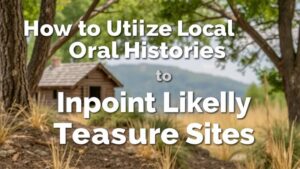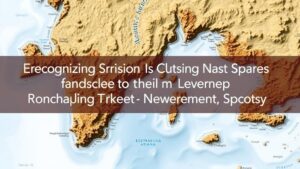Unearthing Collectible Bottles in Former City Dumps Near Waterways
Unearthing Collectible Bottles in Former City Dumps Near Waterways
The practice of unearthing collectible bottles from former city dumps, particularly those located near waterways, is an intriguing intersection of archaeology, history, and recreation. This article delves into the methods, historical significance, and the potential value of these items, equipping collectors and enthusiasts with the knowledge necessary for successful bottle hunting.
Understanding the Historical Context
To truly appreciate the collectible bottles unearthed from former city dumps, it is essential to understand their historical context. Many urban areas were developed during the 19th and early 20th centuries, and waste disposal practices at that time often involved the use of nearby landfills.
These dumps, significantly influenced by the proximity of waterways, served as disposal sites for both everyday household items and industrial refuse. bottles used during these periods reflect the cultural and economic conditions of their times. For example, a collector might find a glass soda bottle from the early 1900s that bears the emblem of a local bottling company, which can provide insight into the area’s commercial history.
Methodology of Bottle Unearthing
When searching for collectible bottles near old dump sites, collectors often employ several methodologies to maximize their success:
- Researching Historical Maps: Understanding where former dumps were located is crucial. Sources include Sanborn Fire Insurance maps and local government archives.
- Using Ground-Penetrating Radar (GPR): Advanced technology like GPR can detect buried objects, helping collectors identify zones with the highest likelihood of containing bottles.
- Field Surveys: Conducting field surveys of areas adjacent to waterways can yield discoveries of both surface finds and deeper caches.
Legal Considerations and Ethical Practices
Before embarking on a bottle-hunting excursion, it is paramount to address legal and ethical considerations. Many former dump sites may fall under the jurisdiction of local governments or environmental regulations. Hence, prospective collectors should:
- Acquire necessary permits when required.
- Respect private property by obtaining permission before entering land.
- Preserve the integrity of the site by ensuring that excavations are minimally invasive.
Types of Collectible Bottles
Collectors often seek specific types of bottles with various characteristics. These might include:
- Colored Glass Bottles: Unique colors, such as cobalt blue, emerald green, and amber, are often more desirable among collectors.
- Blob Top Bottles: Common from the 19th century, these bottles feature a distinctive finish that adds to their charm.
- Inkwells and Pharmaceutical Bottles: Vintage inkwells are significantly sought after for their craftsmanship, while old pharmaceutical bottles with embossing or unique shapes hold historical significance.
Case Studies of Notable Finds
Numerous collectors have made remarkable finds in former city dumps, often resulting in significant financial and historical value:
- The OKeeffe Collection: In 2016, an amateur collector unearthed a rare aqua glass bottle in Southern California, identified as a product from the late 1800s. collectors later sold the bottle for over $8,000 at auction.
- The Providence Story: In Rhode Island, an urban excavator discovered a site containing multiple intact bottles from the mid-20th century, which related to local brewery history. This discovery sparked interest among historians and collectors, ultimately leading to the establishment of a local bottle exhibit.
Real-World Applications and the Collectors Community
Beyond the thrill of the hunt, unearthing collectible bottles fosters a greater appreciation for history and improves the sharing of knowledge within collectible communities. Forums and clubs dedicated to bottle collecting enable enthusiasts to:
- Share discoveries and restoration techniques.
- Exchange historical information about specific bottles and companies.
- Organize events, helping to sustain interest and education in bottle collecting.
Actionable Takeaways
For those interested in unearthing collectible bottles in former city dumps near waterways, several actionable steps can enhance the experience:
- Conduct thorough research to locate historical dumps.
- Use technology and tools to streamline the search process.
- Engage actively with the collectors community for knowledge sharing and collaboration.
- Always adhere to ethical guidelines for excavation to preserve the historical context of the finds.
By approaching bottle hunting thoughtfully and responsibly, enthusiasts can unlock a rich narrative of the past while possibly discovering valuable collectibles along the way.

